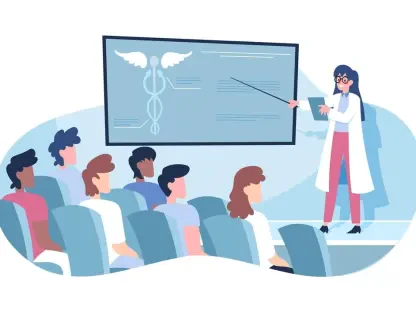In this engaging interview, we sit down with Faisal Zain, a renowned healthcare expert specializing in medical technology, to delve into the intricacies of Colombia’s proposed health reform. Faisal Zain’s insights illuminate the challenges and possibilities within the healthcare system, providing a nuanced understanding of the situation in Colombia.
Can you explain the proposed health reform by Gustavo Petro’s government? How does the National Health System based on a social insurance model differ from the current system?
The reform proposed under President Gustavo Petro’s government aims to establish a National Health System based on a social insurance model. This contrasts with the existing system in its financing structure and emphasis on public health. While the current system relies on a mixed model combining both public and private sectors with financial intermediaries like EPS, the new model focuses on financing through social security contributions and national resources directed into a single public fund. This approach intends to ensure equitable access and coverage by reducing the dependency on private entities.
What role do EPS and pharmaceutical multinationals play in opposing the health reform, and how are they using their influence to block changes?
EPS and pharmaceutical multinationals play a significant role in resisting health reform, primarily due to their vested interests. These groups use their economic clout and lobbying power to shape public opinion and sway legislative action, effectively obstructing any changes that threaten their profitability. Their efforts maintain a system that disproportionately benefits a select few while marginalizing broader access to essential health services.
How has the government addressed the financial woes of EPS, and what has been the response from these companies?
The government has taken a firm stand against the financial demands of EPS, refusing to cover their accumulated debts, which exceed 15 billion pesos. This stance challenges the financial mismanagement within these entities, demanding accountability and obligation fulfillment. The EPS have reacted defensively, maintaining their operations while still lobbying for government bailouts, highlighting their dependency on public funds despite the precarious financial management.
Could you provide some examples of the perverse maneuvers within the current health system that have been exposed during Petro’s administration?
Under Petro’s administration, there have been numerous revelations about the manipulative practices within the health system. Examples include the denial of medication and critical health services to patients, reflecting the profit-driven motives of EPS and pharmaceutical companies. These maneuvers showcase the systemic barriers erected to maximize financial gains over patient care, exacerbating inequities and reinforcing an exclusionary model.
What is a compulsory license, and why was one issued for the drug dolutegravir in Colombia?
A compulsory license is a legal provision that allows the government to authorize the use of patented medication without the consent of the patent holder, particularly to ensure public access during health emergencies. In Colombia, one was issued for dolutegravir, an essential antiretroviral for HIV treatment, as its original pricing posed significant barriers to accessibility. The compulsory license aimed to reduce costs substantially, making the medication more attainable.
What challenges has Colombia faced in implementing the compulsory license for dolutegravir, and what actions are being taken to overcome them?
The implementation of dolutegravir’s compulsory license has encountered several obstacles. Pharmaceutical companies have questioned the legitimacy and legality of the measure, inciting widespread debate. The regulatory ambiguity surrounding compulsory licenses has created confusion and limited drug access. To counter these challenges, the Ministry of Health has engaged healthcare providers in dialogue, promoting regulatory clarity to advance the distribution and accessibility of dolutegravir.
How do EPS create additional barriers for patient access to treatments like dolutegravir?
EPS introduce extra administrative hurdles that impede patient access to treatments like dolutegravir. These barriers are often bureaucratic in nature, involving complex approval processes that deter timely access to necessary medication. This tactic aligns with their broader goal of minimizing costs and maximizing profits at the expense of patient well-being, further entrenching inequities within the healthcare system.
Could you discuss the strategies outlined in Petro’s health reform to achieve universal coverage and improve the equity of access to health services?
Petro’s health reform introduces strategies focused on universal coverage and equity. It suggests sustainable financing mechanisms that prioritize public funds allocation and aims to bolster the public health infrastructure, particularly primary care services. This involves phasing out financial intermediaries like EPS, which have traditionally benefitted from the fragmented system, to ensure comprehensive and equitable health service access.
What are the main hurdles in eliminating financial intermediaries like EPS within the health reform plan?
The elimination of EPS as financial intermediaries presents significant challenges due to their ingrained presence and influence in the current system. These entities wield considerable political and economic power, making the transition complex. Overcoming their resistance requires robust political will and consensus-building efforts, as their eradication threatens existing profit channels pivotal to their operations.
How does the current mixed-model health system established by Law 100 of 1993 function in Colombia?
Colombia’s mixed-model health system, instituted under Law 100 of 1993, utilizes both public and private sectors for healthcare provision and financing. Key actors include EPS as financial administrators, IPS as healthcare providers, and the Ministry of Health which oversees fund distribution and regulation. While designed to offer comprehensive service, the system’s vertical structure fosters fragmentation and disparities, limiting universal access.
What are the key challenges and barriers created by the vertical structure of the current health system, and how have they affected healthcare access?
The vertical structure of Colombia’s health system has resulted in fragmented care and significant inequities, particularly in access and service quality for rural communities. Financial intermediaries, like EPS, exacerbate these issues by prioritizing cost-cutting measures that undermine service delivery. This entrenched model often sidelined patient-oriented practices, adversely affecting overall health outcomes.
How did the COVID-19 pandemic exacerbate the crisis within Colombia’s health system?
The pandemic highlighted and intensified existing vulnerabilities within Colombia’s health framework. As systems struggled to respond to the surge in demand, pre-existing issues like resource allocation inefficiencies and accessibility barriers became more pronounced. The crisis underscored the need for decisive reform that prioritizes equitable healthcare delivery capable of withstanding similar future challenges.
In your view, what changes are necessary to ensure that Colombian healthcare prioritizes the right to health over profits?
To reorient Colombian healthcare toward prioritizing rights over profits, structural changes are vital. This includes eliminating financial intermediaries like EPS and establishing a robust public health system underpinned by equitable financing. Policies must enforce accountability and transparency, ensuring affordability and accessibility while centering healthcare as a basic right, free of commercial influences.
What are some solutions or measures you would recommend to foster political consensus around the elimination of financial intermediaries in the health system?
Fostering political consensus around eliminating financial intermediaries requires a multifaceted approach. This includes transparent communication about the benefits of reform, highlighting success stories from similar transitions globally. Engaging stakeholders across sectors to establish a mutual understanding of the long-term advantages could ease resistance. Building coalitions among lawmakers and civil society can drive meaningful discussions and spark policy shifts.
How does the pricing and trade of medications in the current system impact public finances and healthcare access for Colombians?
The current medication pricing and trading paradigm significantly strains public finances, leading to increased healthcare costs. High medication prices result in increased public expenditure, diverting funds from essential services and fostering inequities in access as affordability becomes a primary concern. Addressing these issues necessitates systemic reform that controls pricing and enhances trade fairness to secure equitable health access.
What is your forecast for these changes in health reform within Colombia?
Looking forward, the health reform holds the potential for transformative change within Colombia by addressing entrenched systemic inadequacies. The success of these reforms will hinge on strategic implementation and robust political backing to dismantle the prevailing profit-oriented model. If achieved, Colombia could witness improved health equity and service delivery, ensuring healthcare as a fundamental right for its citizens.









